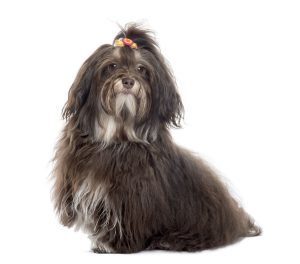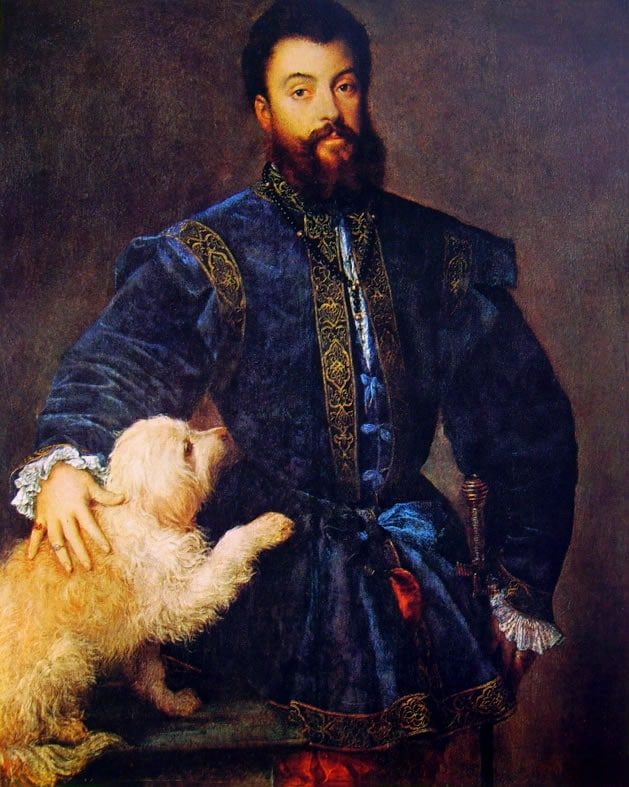About Havanese: An Interesting History For an Exquisite Dog
History
 The Havanese is the national dog breed of Cuba, where they are a much beloved family pet. Although a relatively recent introduction to the United States, they are an old breed in Cuba and have been long-loved in European countries as well.
The Havanese is the national dog breed of Cuba, where they are a much beloved family pet. Although a relatively recent introduction to the United States, they are an old breed in Cuba and have been long-loved in European countries as well.
Its predecessor was the Tenerife, a Spanish dog that lead to modern day Bichon-type breeds like the Havanese. Spanish settlers brought Tenerife dogs to colonial Cuba in the early 1500s, where they slowly over time developed into the Havanese breed we know and love today.

By the 18th century, Cuba had begun to attract wealthy Europeans for vacationing; especially Havana, which at the time was an important Spanish port. Returning to Europe, these aristocrats brought with them the Dog of Havana, which grew quickly in popularity in the royal courts of England, France, and Spain. By the mid-18th century, their popularity had spread even further through Europe, where they were shown in early European dog conformation shows. Charles Dickens had one, and Queen Victoria owned two!
Meanwhile, back home in Cuba, the sugar barons were a dying breed themselves and the bourgeoisie were on the rise. Despite the changing times, the Havanese continued its hold on the hearts of the Cuban people.
The Cuban revolution saw the departure of many of the class of Cubans who owned Havanese. Some of these wealthier Cubans found their way to the United States, bringing their little Havanese dogs with them. A grand total of 11 Havanese dogs were brought to the United States and the majority of the Havanese in the world today descend from those immigrant dogs.
The Havanese Club of America was founded in 1979, and the breed became recognized by the American Kennel Club in 1996.
Health
The Havanese is a relatively healthy breed, thanks to selective breeding by responsible breeders. But like any dog breed, there are some genetic health issues that a potential owner should be aware of before purchase. Please read our pages on Allergies, Health Problems, and Lifespan pages for more information.
Temperament
 The Havanese is a smart, friendly breed that can make an excellent pet for most any family or living situation. While preferring the company of their favorite person, they are sociable with anyone and do great with children. Clownish, they will try their best to make you laugh! Although an energetic breed, they are happy to keep their playtime indoors and do not require a large backyard or hours long hikes.
The Havanese is a smart, friendly breed that can make an excellent pet for most any family or living situation. While preferring the company of their favorite person, they are sociable with anyone and do great with children. Clownish, they will try their best to make you laugh! Although an energetic breed, they are happy to keep their playtime indoors and do not require a large backyard or hours long hikes.
For even more information on the lovable personality of the Havanese, please see our Personality & Temperament page.
Grooming
The Havanese has a hairlike coat rather than the fur coat most dog breeds possess. Because of this, they are often referred to as “nonshedding.” In reality, they do shed but their hairs become trapped in their coat. These trapped hairs can quickly grow into mats if their coats are not brushed out daily. It is important to keep up on your dog’s grooming in order to prevent mats from developing. Mats can cause pain and discomfort and even lead to infection.
For more information on grooming your Havanese, please check our Grooming submenu at the top of the page to find our sites on grooming adult Havanese and grooming Havanese puppies. Additionally, we have pages on their Coat Colors and Shedding that may be useful to you.
Training
The Havanese is a natural clown, but they are also eager to please and eager to learn! Although never bred to work, the Havanese does have a natural predisposition to people-pleasing. This trait is what drives and motivates their desire to learn. Their clownish tendencies and people-pleasing trait align to make them the perfect trick dogs, too, and they were even once used as circus dogs! They love to learn and perform for their people or strangers!
However, due to that same people-pleasing trait, the Havanese can be prone to separation anxiety if not properly trained, and especially if it comes from poor breeding. It is important to begin training and healthy separation young with your Havanese puppy so that they can handle being separated from you as an adult. Likewise, getting a Havanese if you don’t plan on spending much time with them wouldn’t be fair to you or the dog. Remember, these dogs love being with their people!
 Havanese are very in-tune with their people and emotions, and for this reason they do best with a positive reinforcement training method. Negative reinforcement methods such as physical punishment may cause your Havanese anxiety. Clicker, treats, toys, and just good old-fashioned pets are great ways to train and reward your Havanese while also building their confidence and trust!
Havanese are very in-tune with their people and emotions, and for this reason they do best with a positive reinforcement training method. Negative reinforcement methods such as physical punishment may cause your Havanese anxiety. Clicker, treats, toys, and just good old-fashioned pets are great ways to train and reward your Havanese while also building their confidence and trust!
Although easy to train and eager to learn, the Havanese has a tiny bladder like any toy breed. For this reason, potty training may be a more difficult process than for a larger breed puppy. Crate training is highly recommended for your Havanese to prevent accidents inside and patience is a must! Scheduled feedings are also a good idea to keep your puppy consistent enough for you to follow without guesswork. Tether training is a popular form of house training for any breed of dog, and involves keeping the puppy with you (tethered by a leash) at all times so that you can observe their signs.
Some people may choose to instead train their Havanese to potty inside on a puppy pee pad or in a litter box.
For more detailed information and advice on training your Havanese, please see the Training submenu at the top of the page, where you will find links to our Havanese training website.




